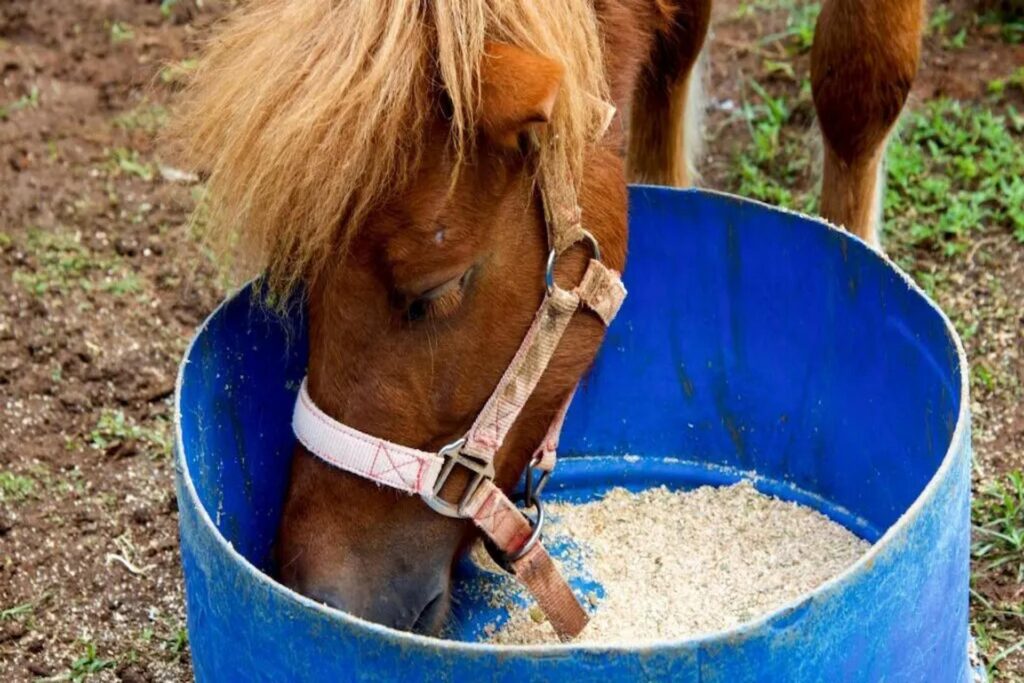It is widely appreciated that fibre is an important component of horse feed, but why is it so important for the horse’s health? Here we answer some of the FAQs about fibre.
Why Is Fibre Such An Important Component Of An Equine Diet In Terms Of Digestive Health?
The horse is a herbivore and has evolved to thrive on a horse food diet based on fibrous material. We are messing with thousands of years of evolution when we try to change the nature of the materials the horse consumes – that is the challenge for the equine nutritionist – we need to balance health and performance by utilising fibre as much as possible.
Fibre is essential all the way through the digestive system, both in terms of its physical presence and what it generates. It takes more chewing which produces more saliva which neutralises acidity and so regulates how acidic the digestive tract is. Its physical presence in the stomach acts as a barrier to acid splash when the horse exercises, it promotes regular bowel movement, it acts as a fluid reservoir in the hindgut, it provides slow-release energy, it provides heat when it is fermented in the hindgut, it produces B vitamins as a by-product when it is broken down to name a few of the reasons why fibre is important!!
What Do You Think Is The Most Important Part Or Process Of The Equine Digestive System?
Fundamentally the mouth is without the ability to bite and chew food properly so it can be consumed, the whole rest of the digestion process is redundant or compromised. Horses are outliving their teeth these days and it is the loss of the ability to chew that compromises their health and well-being. We can intervene and carry out the chewing for them by chopping and pelleting fibre – then the hindgut where fibre is broken down to release energy becomes the most important part of the process.
What Do You Consider Is The Best Source Of Fibre?
This very much depends on the horse – for those with an increased requirement, such as breeding stock, performance horses and veterans, fibre sources such as sugar beet and alfalfa are ideal as they provide lots of nutrition in a safe form. However, for a laminitic or overweight individual, straw can be the best source of fibre as it provides all the benefits of fibre but with fewer calories – which could ultimately be a life-or-death situation!
What Effect Does Starch Have On The Digestive System?
Starch changes the microbial populations in the digestive tract. When it is broken down by bacteria, in particular, it produces stronger acids than fibre, thereby increasing acidity in the digestive tract. This may impact on the mucus, gut tissue and microbial populations in the gut which affects health, immunity and digestive efficiency. Most leisure horses need little or no starch in horse food, the challenge is with performance horses where some starch may be required for athletic performance but this has to be balanced against the increased risk of diseases such as colic, gastric ulcers etc.
What Is The Role Of Hindgut Microbes And How Can They Be Supported?
We are just starting to scratch the surface of how important gut microbes are to humans, and although we know the fundamental roles of microbes for digestion, we really don’t know much about how they affect the immune status, behaviour and performance of the horse.
At a fundamental level, microbes break down fibre by a fermentation process that produces energy that the horse can utilise, B vitamins are a by-product of this process. This is why any horse on a restricted fibre diet can benefit from B vitamin supplementation. Heat is another by-product of the fibre fermentation process.
Feeding plenty of fibre is the best way to support fibre-digesting, beneficial bacteria.
What Is A Common Myth You Find Yourself Addressing When Advising Customers?
That fibre is just bulk and doesn’t provide energy or anything useful for that matter. If there is one “take home” message then it is don’t underestimate how much high-quality fibres can contribute to your horse’s requirements.

